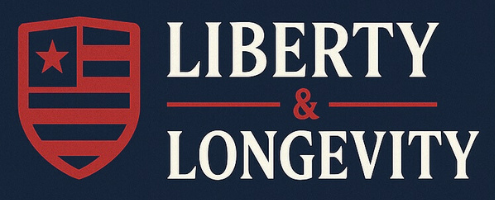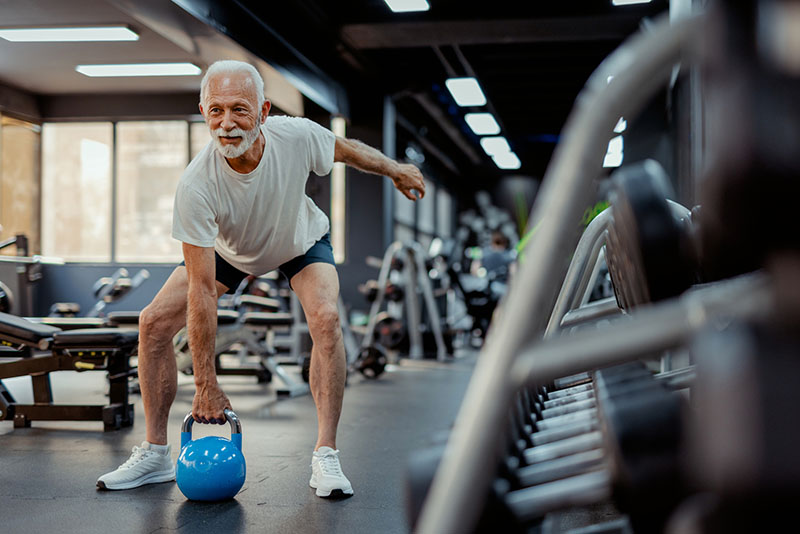Briefing:
Forget miracle creams or fancy supplements. The strongest anti-aging tool you have is in your own body: muscle mass. And it’s never too late to build it.
Why Muscle Matters More Than You Think
When most people hear “strength training,” they picture pumping iron in a crowded gym, chasing six-pack abs, or bulging biceps. That’s not what we’re talking about here.
We’re talking about functional strength — the kind that lets you:
- Pick up your grandkids without hurting your back.
- Carry groceries up the stairs without getting winded.
- Catch yourself if you trip instead of breaking a hip.
- Stay independent, living life on your own terms.
Muscle isn’t about vanity. It’s about freedom and longevity.
The Problem: Sarcopenia
After about age 30, adults naturally begin to lose muscle mass — a process called sarcopenia. By 60, that loss speeds up dramatically. Left unchecked, sarcopenia leads to weakness, frailty, falls, and loss of independence.
But here’s the good news: muscle loss is not inevitable. With the right habits, you can rebuild muscle at any age. Even people in their 80s and 90s gain strength with simple resistance training.
Why Muscle Is the Real “Anti-Aging Pill”
- Protects Against Falls and Injuries
Strong muscles protect bones, joints, and balance. A broken hip is often the beginning of serious decline in older adults. - Keeps Metabolism Alive
Muscle burns more calories at rest than fat, helping regulate weight and blood sugar. - Supports Healthy Aging of Organs
Muscle is a “reserve tank” for amino acids, which your body uses in nearly every function — repairing tissues, producing hormones, fueling immunity. When you don’t eat enough protein, your body eats your muscle first to keep everything else running. - Prevents Disease
Higher muscle mass is linked to lower risks of diabetes, heart disease, and dementia. - Boosts Energy and Mood
Strength training improves sleep, reduces depression, and raises confidence.
What Strength Training Really Means
You don’t need a gym membership. You don’t need to bench press 200 pounds. What you need is functional movement — strength that translates to real life.
Examples of functional exercises:
- Squats or chair stands (leg strength for mobility).
- Push-ups or wall push-ups (upper body for lifting and carrying).
- Farmer’s carries (holding weights or grocery bags, walking for distance).
- Step-ups (building the strength and balance for stairs).
Do these 2–3 times a week, and you’ll build the kind of strength that makes aging a whole lot easier.
Protein: The Missing Piece
Here’s what most people don’t realize: exercise builds muscle, but only if you eat enough protein.
- The old government guideline (0.36 grams per pound of body weight) is just enough to avoid deficiency — not enough to thrive.
- For healthy aging, experts recommend 0.6–0.8 grams of protein per pound of body weight daily.
What That Looks Like
- Average 60-year-old man (197 lbs): needs 120–160 grams of protein daily.
- Average 60-year-old woman (166 lbs): needs 100–130 grams daily.
That’s about 30–40 grams per meal, three times a day.
Why It Matters
Protein isn’t just for muscles — it’s the raw material for nearly everything in your body. Hormones, enzymes, immune cells, neurotransmitters… they’re all built from amino acids. If you don’t eat enough, your body raids your muscle tissue to fill the gap.
Food Examples (Protein Content)
- 6 oz chicken breast = ~40g
- 1 cup cottage cheese = ~25g
- 3 eggs = ~18g
- 6 oz salmon = ~38g
- 1 cup lentils = ~18g (plant-based option)
If you aim for protein at every meal, you’ll protect the muscle that protects you.
“But I Don’t Like Gyms…”
Good news: you don’t need one. Functional strength can happen anywhere:
- In the living room with resistance bands or bodyweight.
- In the yard or garden, lifting, squatting, and hauling.
- With a couple of dumbbells or even water jugs.
The key is progressive overload — gradually challenging your muscles more over time, whether that means more reps, heavier weights, or harder variations.
A Simple Starter Plan (No Gym Required)
Do this 2–3 times per week:
- 3 sets of 10 chair squats
- 3 sets of 8–10 push-ups (wall or counter if needed)
- 2 minutes of farmer’s carries (with grocery bags or dumbbells)
- 3 sets of 10 step-ups (each leg)
Add walking or light cardio on off days. Pair it with protein, and you’ve got a powerful anti-aging combo.
Final Takeaway
Muscle is more than tissue — it’s your bank account for health.
Build it, and you’ll gain balance, resilience, and years of independence. Lose it, and you’ll pay in frailty, falls, and dependence on others.
The best part? You don’t need to live in a gym or chase bodybuilding goals. You just need enough strength to move confidently through daily life.
So if you’re serious about living longer and stronger, don’t look for pills. Look at your muscles. Because they are the real anti-aging pill.
Sources for Further Reading
- Volpi E, et al. “Sarcopenia: Definition, Consequences and Preventive Strategies” — PMC
- Harvard Health: “Preserve Your Muscle Mass” — health.harvard.edu
- American College of Sports Medicine: Resistance Training for Older Adults — acsm.org
- NIH: “Protein Requirements for Older Adults” — pubmed.ncbi.nlm.nih.gov
- Fragala MS, et al. “Resistance Training for Older Adults” — Journal of Strength & Conditioning Research

